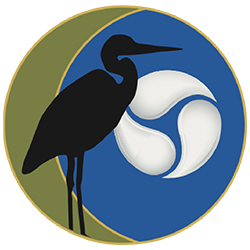Our Hakomi training consists of 45 days. The learning is primarily experiential, we learn states of being, principles and skills that are specific to the method.
Each training location chooses the duration of its modules (2 to 5 days) and their frequencies. There are multi-level courses (which allow several entry points) or training courses over 3 years.
Information Offered to Prospective Students and Clients.
If you’re considering becoming a student in a Hakomi Training or a client of a Hakomi Therapist this short description will acquaint you with the method and what you may experience.
Here’s What You Need to Know About the Method:
Hakomi is based on the idea that much of our everyday suffering is in fact unnecessary and is produced by long held, unconscious beliefs that are no longer true or relevant. The method is designed to bring such beliefs into consciousness. It’s not about people talking out their problems. We don’t have long, speculative conversations with people about their troubles or history. A person’s emotional history – especially the part that has created the unconscious habits and beliefs with which that person meets his or her world – that history is operating right now. It is written in the way the person does things now, his style, his defining characteristics. We use those things to help the person study who he or she is. Hakomi is a method of assisted self-discovery. A Hakomi practitioner brings what are normally inaccessible mental processes-like implicit beliefs and habitual rules and attitudes-into consciousness in a gentle, efficient way. Once these processes are made conscious, emotional relief and revision of beliefs becomes possible. Old, painful experiences are integrated. Beliefs and habits are examined and modified. A more realistic and satisfying way of being begins.
As practitioners, we pay very close attention to the way a person does things. The information needed for the method to work is contained in non conscious, nonverbal aspects of behavior, such as tone of voice, movements, gestures, posture and facial expressions. By observing these, we get ideas about what unconscious processes are controlling a person’s behavior. On the basis of these ideas we create little experiments (often only a simple evocative statement) done with the person in a mindful state. (This method of self-study requires short periods of mindfulness. Participants must be able to be calm and centered enough to observe their reactions.) Effective experiments elicit clear reactions, often emotional ones. These reactions are the links to the unconscious mental processes organizing them. These reactions are the necessary prelude to the integration and positive emotional outcomes achieved by the method.
What to Expect:
The teaching method is similar to the therapy method. You can expect teaching to be primarily experiential. There will be short lectures, discussions, and demonstrations, but mostly, the group will do exercises designed to convey the ideas being presented in practical, experiential way. These exercises sometimes bring up emotions, sometimes, very strong ones. In those situations, the trainer and the assistants know how to guide and support the process. Overall, you can expect that you will change in much the same way you would change being a client rather than a student.
What You Need to be Ready:
You need to be ready to be with your own present experience. Your reactions to the exercises, some of which are done in mindfulness, need to be studied and reported to your small group partners. You need to be comfortable learning in this way, with your whole body, mind and spirit. You need to be able to stay focused on experience and you need to be ready to go into a calm, inward focused, accepting state, to let things happen that you might normally contain or avoid. You have to be willing to experience some painful emotions. These are your challenges.
There is almost no homework, although it is highly recommended that you read about the work and practice what you’ve learned, either with your fellow students or with people not in the training. The more you practice, the better.
The difference between an expert and a novice is that a novice hasn’t acquired the schemas of an expert. Learning requires a change in the schematic structures of long term memory and is demonstrated by performance that progresses from clumsy, error-prone, slow and difficult to smooth and effortless. The change in performance occurs because as the learner becomes increasingly familiar with the material, the cognitive characteristics associated with the material are altered so that it can be handled more efficiently by working memory.
The Rewards:
You will learn a modern, effective scientific approach to helping people change.
You will gain a deeper understanding of yourself and others and greater freedom to choose what you will do and feel. You will find greater pleasure in everyday living and will be able to develop richer, happier relationships.

